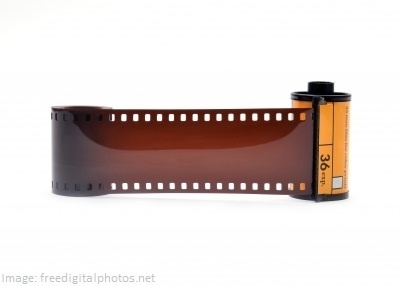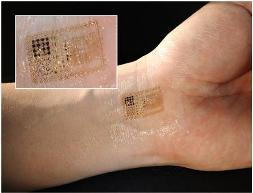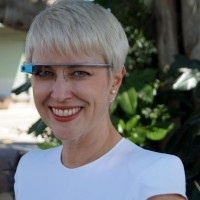
Is pharmacy facing its Kodak moment? By Cathie Reid – Digital Health Summit post 3
“This is the third post in a series from the Digital Health Summit that formed part of CES 2015, with the first talking about the role of sensors and wearables and the second on how the traditional doctor visit is facing significant disruption.
Pharmacy has been fighting for greater recognition as a genuine member of the primary healthcare team in Australia for an extended period of time, and I was really interested to hear the speakers thoughts on the opportunities that the emerging digital space could provide.
With the growing cost burden of health providing governments and other funders with significant challenges, Randy Parker, CEO of MDLive Inc suggested many healthcare businesses are now facing their own Kodak moment and if they don’t find a way to reinvent, then they can expect to suffer the same fate. Pharmacy, to me, in its current format is at high risk of sitting in this camp.
So much of pharmacy remuneration is still linked to reimbursement for medication supply, despite years of various parties suggesting a shift to incorporate more service based revenue generating activities. How will a shift to digital prescribing impact on this, where the prescribing of digital programs which collect data and facilitate behavioural change becomes as commonplace as the prescribing of medicines? This is a great opportunity, but pharmacy needs to position itself to be able to fill this new type of prescription just as efficiently and effectively as we supply medications.
I’ve long been frustrated by the lack of willingness of pharmacists in Australia to see the opportunity that engaging with wearables presents (I wrote about it here back in 2014). While to date the majority of wearables have been more fitness tools rather than genuine health devices, they did create an opportunity for pharmacists to both create a new, health-relevant revenue category but also more importantly, to start having conversations with consumers about how capturing and tracking data about themselves could benefit their health management.
A number of physician at the summit spoke about the challenges of having patients capturing data that they thought was relevant but the physician didn’t, and then how that data was presented in a manner that was actually relevant. All of this is really challenging to work through in a standard 10-15 minute consultation, that also requires a myriad other matters to be discussed.
It’s a different story in pharmacy though. Pharmacists have the luxury of having their patients visit on a far more regular basis than doctors do, and can not only have conversations about the type of information that their health conditions would best benefit from tracking, but then have the patient come back, review the data collected and identify and discuss potential trends revealed, that can then be passed onto the doctor.
There are so many opportunities here, and they don’t just stop at devices and wearables. One of the trends discussed at the summit that we can expect to see enormous activity in for the over 50s market is neuroplasticity, and the ability to ‘retrain’ your brain. With medical grade EEGs now available from retailers like Best Buy and Amazon in the US, combined with apps and programs that provide brain exercises, a huge opportunity presents for pharmacists. One of their key customer demographs, who are very focused on avoiding dementia and delaying the onset of Alzheimer’s now have the opportunity to readily access products to help with these goals. Isn’t their pharmacy a better place to do this than Best Buy?
Walgreens fully understands this opportunity, and not only does their Balance Rewards program already have 100-150,000 connected devices earning points for consumers every day, they have just announced a partnership with Qualcomm to futher integrate this and add additional devices and data. Adam Pellegrini, VP of Digital Health at Walgreens said that with their pharmacists already engaging in 9-10,000 ‘Pharmacy Chats’ via their mobile app with consumers each WEEK, extending this further into remote monitoring via devices is the natural next step.
Let’s also pause for a minute and think about the opportunity for Australian pharmacists to do video consults for their patients in the same way doctors can. In addition to the over 5os, parents of young children are another key pharmacy demograph. I know when my kids were young the opportunity to do a video consult and then have any necessary products collected or delivered rather than having to load them into the car and head to the pharmacy would have been a very welcome relief. As a pharmacist, the opportunity to confirm a head lice infestation by looking at the head via a video feed instead of getting up close and personal also has some appeal! I just don’t understand why more pharmacies aren’t looking offering this type of service. It’s certainly something that we are working on at Epic Pharmacy, tailored to our areas of practice.
While there are no shortage of opportunities for pharmacy today, we also need to get ready for what is coming in the emerging areas of genomics and personalisation of medicines. Rav Sheth from MC10Inc showed us their tiny sensor patch which can be worn anywhere on the body and capture any kind of information, which can then be utilised in ‘adaptive medicine,’ where dosage is adjusted according to patient response.

MC10Inc sensor tattoo
There are so many opportunities for pharmacists to get involved in this exciting new era of healthcare, but sitting back waiting for others, whether that be marketing groups, professional bodies or government, to do all of the work in designing and implementing programs is not going to be good or fast enough. Whether you’re a business owner or an employee, get online, do your research and get started; there’s no shortage of information out there and that’s the best way to avoid having your own Kodak moment.”
 Cathie is Managing Partner of Epic Pharmacy Group, one of Australia’s largest pharmacy service providers to the hospital, oncology and aged care sector. The Epic group has also founded two other successful national businesses, APHS Packaging and Icon Cancer Care. APHS Packaging delivers medication compliance packs to over 20,000 elderly Australians via a network of community pharmacy customers and Icon Cancer Care is Australia’s largest private provider of cancer care, managing more than 75,000 patient visits each year.
Cathie is Managing Partner of Epic Pharmacy Group, one of Australia’s largest pharmacy service providers to the hospital, oncology and aged care sector. The Epic group has also founded two other successful national businesses, APHS Packaging and Icon Cancer Care. APHS Packaging delivers medication compliance packs to over 20,000 elderly Australians via a network of community pharmacy customers and Icon Cancer Care is Australia’s largest private provider of cancer care, managing more than 75,000 patient visits each year.
Cathie was named one of the Top 100 Women of Influence by the Australian Financial Review in 2013, won a National Telstra Business Women’s Award in 2011 and was recognised by Monash University with a Distinguished Alumni Award for Professional Achievement in 2012.
She is a strong advocate of wearable technology and social media in healthcare and the role they can play in actively engaging society to manage their own health outcomes. Cathie is focused on development of innovative technology solutions to better meet the challenges of the sector. Cathie also has a blog at cathiereid.com.
This post was originally posted here on Cathie’s blog and has been reposted on My Health Career with Cathie’s permission.
More articles:
- Sensors, wearables & data – take outs from Digital Health Summit post 1 by Cathie Reid
- Disrupting the doctor visit – by Cathie Reid – Digital Health Summit post 2
- What do patients think about digital health? By Cathie Reid – Digital Health Summit post 4
Image: www.freedigitalphotos.net
